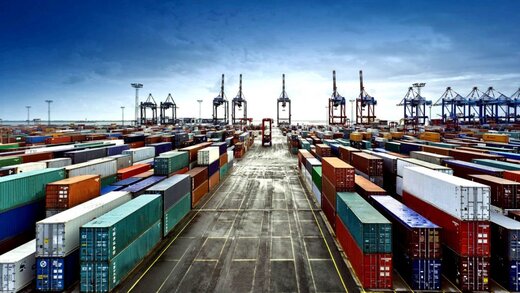Introduction :
Doing business with export and import requires a commercial card. The commercial card is issued by the Chamber of Commerce of Industry, Mining and Agriculture of Iran and is approved by the Ministry of Industry, Mines and Trade.
Please note that the import of goods, both governmental and non-governmental, into the country in a commercial manner requires the registration of an order and an entry permit. In addition, these permits are issued by the Ministry of Security through the Jame Tejarat website to applicants.
http://www.ntsw.ir/
Order registration is actually the same as the permission to enter the country.
1- Procedures for clearance of goods from customs (exports)
Before explaining the clearance procedures, it should be said that when legal and natural persons get a commercial card, they should go to the nearest customs office and proceed with their coding.
And then, by obtaining the Euro and the password, proceed to the following address to enter the window system of the cross-border unit.
http://epl.irica.gov.ir/login
The data entry unit (preparation and submission of the declaration) of the export declaration round through its special website to the desired customs and sending the documents that should be attached to the export declaration.
www. epl.ir
These documents include:
Business Cards
Warehouse receipt (if needed)
Packing list or packing list of goods
Customs entry permit
Providing legal licenses (if needed)
Provision of regulatory permits (if needed) and warehouse bill (if needed)
Power of attorney and letter of introduction (if needed)
Other documents (if needed)
2-Stages of doing work in the export unit:
A) Designation of an expert
b) Checking documents, authentication, checking Article 7 (previous debt of the goods owner to customs)
c) Registration or cottage number
d) Issuance of license
e) Determining the appraiser
Definition of evaluator: evaluators are a number of customs technical employees who work for long-term and short-term periods. They verify the declaration of goods to customs.
3- Product evaluation: In the export process, product evaluation can be done in the following situations:
a) Evaluation of the goods in the customs warehouse, in this case, a warehouse receipt will be issued.
b) Evaluation on the truck in the customs area (Evaluation form for transporting one head)
c) Appraisal of the goods in the warehouse of the owner of the goods (appraisal form on the spot)
After the stages of evaluation, adding observations, adding the evaluator’s opinion in the declaration and the comprehensive customs system and issuing the electronic license receipt by the unit official, the electronic declaration is sent to the export official and after checking by the relevant expert, it is signed in case of approval.
At this stage, the customs license receipt, which includes all the information related to the customs license, is issued in physical form and is signed by the export official.
4- Leaving the export goods from the country’s border customs
The owner of the goods, with the receipt of the electronic permit, goes to the border customs office of the export along with the export goods and submits the permit receipt.
After the border customs checks in the form of physical documents (when the goods are exported from the zero point of the border), the details of the goods and the border row are inserted in the back of the receipt of the electronic license and recorded in the border row book.
Customs clearance procedures (import) of the red route:
1) Information entry unit (preparation and submission of declarations)
By referring to the information entry unit, the draft declaration was received from this unit and after entering the information related to the goods, the customs office of the place of declaration and entering the details of the goods owner and the declarant to the information entry unit, it is delivered to this unit with the entry password of the goods owner in (EPL) enters and takes action on the declaration round of the declaration. Or, the owner of the goods or the legal representative enters the system of the window of the cross-border trade unit in his office, and by entering his password, he takes the declaration round.
2) Procedures for goods clearance:
1- Determining an expert
2- Verification of authentication documents, verification of article seven (previous debt of the goods owner)
3- Registration or cottage number and determining the path of the declaration, when the declaration is placed on the red path, the complete formalities are done.
3) Product evaluation:
The evaluation of the goods is done randomly from the packing list by the evaluator. In the evaluation of the goods, the following points should be paid attention to:
a) If the goods are raw materials: the sample is sent to the laboratory to determine the type of goods.
b) Obtaining legal permits from subordinate organizations
The documents that must be submitted to the customs for the import declaration, which are:
Commercial card, form (which is sent by the seller to the buyer), order registration (issued by Samat) and order registration are the permission to enter the country.
c) Currency supply certificate: It is issued by the relevant bank.
t) Insurance policy: issued by the insurance company.
c) Inspection certificate at source: issued by the inspector company.
C) Bill of Lading: It is issued by the international transport company.
e) Invoice: issued by the seller.
k) Baling goods: It is issued by the owner of the goods along with the goods packaging certificate.
d) Certificate of origin: It is prepared by the Chamber of Commerce of the exporting country.
z) Warehouse receipt: issued by the transport company.
R) License: issued by the transport company.
g) Power of Attorney: It is issued if needed.
4) checking the value of goods by an expert through the site
www.tsc.ir
5) Fund unit.
6) Exit door unit.
Footnote: All materials have been prepared and arranged by the training unit of Isfahan Chamber of Commerce.












